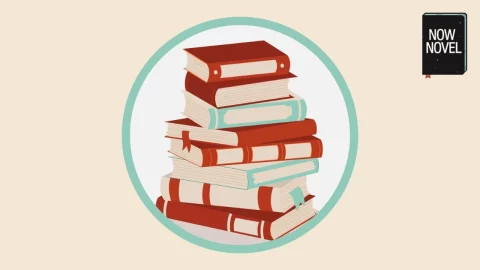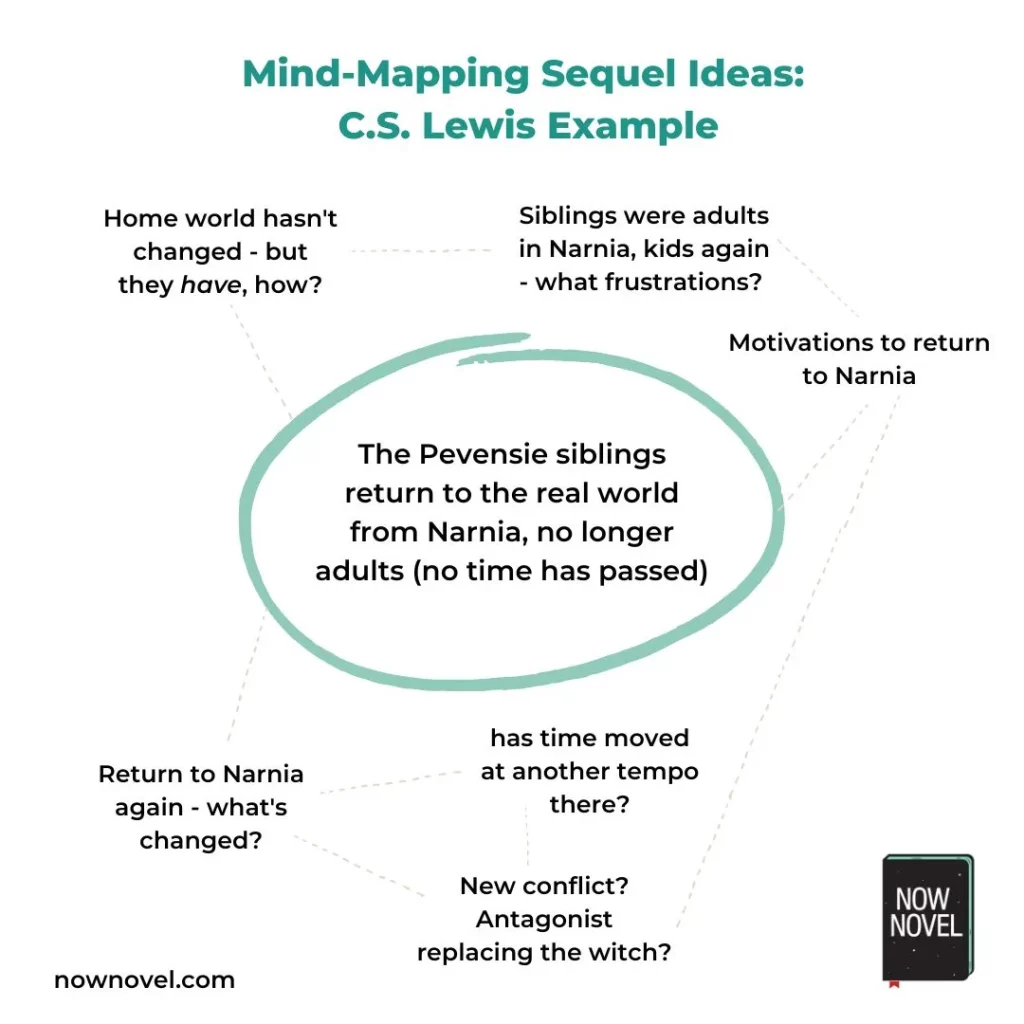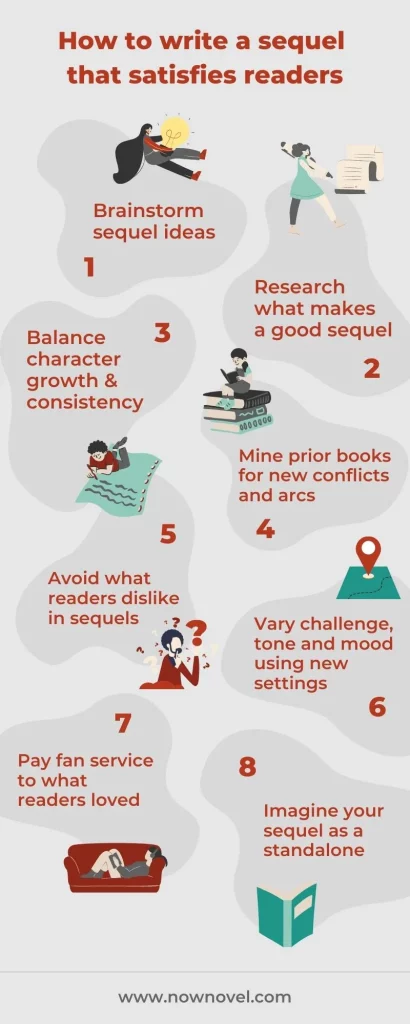Writing a sequel may delight fans of your standalone book. It’s an opportunity to build on story arcs, characters – the world you’ve already created. Learn how to write a sequel that satisfies fans:
A sequel is a story that continues the events, characters and/or setting of a prior release. As Oxford Dictionaries puts it, ‘a book, film, play, etc. that continues the story of an earlier one’.
Reading over discussions about sequels such as this Quora thread (and ‘best’ and ‘worst’ sequel lists), you can gather that a good follow-up:
1. Improves on its precursor (in character, structure, worldbuilding and other story elements).
2. Balances character consistency with believable development (loved characters may recur but aren’t all stuck in the same old patterns).
3. Further explores, deepens or develops questions raised or scenarios established.
4. Continues the threads of conflicts (internal and/or external) that the prior story did not fully resolve.
5. Renews (or believably ages) established fictive worlds.
6. Finds good stories left to tell in source material, rather than cashing in in a cynical or crassly commercial way.
What do you think makes a fantastic sequel? Sound off in the comments.
What’s one of your favorite sequels of all time, and why? Let us know in the comments.
How to write sequels that satisfy fans
How to write sequels that please your first book’s fans:
- Brainstorm sequel ideas
Freewrite or mind-map to find ideas connected to your previous book in character arcs, themes, subject matter, setting or other areas.
- Research what makes a good sequel
What do critics say about critically-acclaimed book and film sequels? What can you learn from this about the anatomy of a brilliant sequel? (Read on for an example from the Godfather films).
- Balance character growth and consistency
Strike a balance between fan service and making sure beloved characters from your prior title grow or change in interesting ways.
- Mine prior books for new conflicts and arcs
Who has gained or lost ground in the previous book? What new stakes, power plays or other situations needing resolution arise?
- Avoid what readers dislike in sequels
Avoid hasty sequels that read like cynical cash grabs or an overlong sequel in dire need of editing.
- Vary challenge, tone and mood using new settings
Broaden the scope of where your story is set. A new town, country or location may be all you need to find new drama.
- Pay fan service to what readers loved
What made readers respond well to your previous story or book? Give fans more of the same, even while finding new ground to keep your series varied.
- Imagine your sequel as a standalone
Think of your sequel as a standalone so that you ensure it has its own self-contained arcs that satisfy readers.
Let’s explore developing a series through sequels further:
Brainstorm sequel ideas
Writing a sequel to a book has one big advantage:
I always get excited when I find out there’s a sequel, because all the work is kind of done.
Jennifer Coolidge
This may be true in part. You do already have some parameters to work within. Yet you still need to find ways to make what’s there already – characters, settings, conflicts – fresh and new.
Try various brainstorming methods to come up with sequel ideas, to find one that works for you. You could:
- Free-write: Pick a character, theme, or conflict from the previous book in your series. Set a timer for 15 minutes and write as many scenarios or developments you can come up with
- Mind-map: Write an outcome from a previous title you want to turn into a series on a page. Draw lines off and connect new possibilities
Research what makes a good sequel
What makes a good sequel? Readers and film-goers have widely-differing views. Yet researching why the best-loved sequels of all time are highly regarded will help you understand broad patterns.
Take The Godfather: Part II, which at time of writing has a 90 percent average score on Metacritic from 18 professional critics’ reviews.
It’s interesting to analyze and compare positive language suggesting why an acclaimed sequel is considered better than the original.
The impression that emerges is that Francis Ford Coppola’s sequel:
- Goes deeper in analyzing characters’ psychologies and motivations
- Is more acute in social observation or critique (e.g. the nature of dysfunctional families or the shadow side of capitalism)
- Shows consequences more than glorifies (crime/violence)
- Is richer thematically
- Is broader in scope
- Transcends melodrama, exhibiting fuller authenticity
Looking back to the previous section, you could apply each of the above bullet-points to your sequel brainstorming.
How could your sequel include more trenchant social observation? Or show broader, rippling consequences of the events or scenario your previous title ended on?
Balance character growth and consistency
In a sequel, if there are some inconsistencies in your story, they may go unnoticed. If they are minor.
If characters readers adored in your previous book change overnight and this change reads:
- insufficiently motivated or earned by story events which show cause
- as though your character becomes more passive or less involved in the primary action
- As though your characters seem stuck or static
Readers may be frustrated. The above are some of the criticisms made in Goodreads reviews of the third book in The Hunger Games series, Mockingjay.
A handful of readers on Goodreads voted this the ‘most disappointing sequel’ in a poll. Delving into the more critical reviews gives a sense of why.
One frustration raised is that the main character Katniss kicked butt less:
One of the reasons why I loved this series was because of Katniss. She was strong, resourceful, clever and cunning, she had an amazing survival instinct and she knew how to persevere. In Catching Fire, these qualities diminished; she was mainly a pawn, a puppet for others to use for their own objectives. But she still had some semblance of control and she was still Katniss. In Mockingjay, all these traits are scrapped and we get a Katniss-clone who is angsty and bitchy and whiny (wasn’t Bella in Twilight bad enough?). Half the book, she’s throwing herself pity parties in the closet (literally!).
Goodreads user Tina, Goodreads book review of Mockingjay.
To ensure characters grow in line with the personae as well as the goals and motivations you’ve established:
- Track your character development: A story-planning tool like the Now Novel dashboard makes it easy, and you can download a PDF with links back to edit your character descriptions as they grow
- Remember what resonated with readers or beta-readers in book one: If your character is a butt-kicking warrior or crack lawyer in book one, having them watch from the sidelines in book two may disappoint readers
Mine prior books for new conflicts and arcs
What if your first book is a standalone and the primary antagonist or obstacle was overcome in the story’s climax and resolution? Where to from there?
Inspiration for conflict in stories is easy to find in our world’s history.
History tells us defeated tyrants sadly often leave power vacuums. Power vacuums that are quickly filled by something as bad or worse (or not entirely comparable, but still antagonistic to the (extra)ordinary person – or protagonist).
A defeated witch (fantasy), mean in-law overcome (romance), or other obstacle may give way to whole new trials in your sequel.
Writing is like improvisation in that it requires saying ‘Yes, and?’ – continuing a thought or scenario to avoid dead air.
To find new conflicts and potential arcs for a sequel, look at where the previous book ended and ask:
- Who has gained what?
- Who has lost what?
- What does each character want or need now (and what might be in their way)
- What new threat/peril/challenge could test characters further or take them on new adventures promising change?
Avoid what readers dislike in sequels
There are many things that readers tend to dislike in sequels. Sequels often get negative feedback for:
Reading as a cash-grab. Cynical reviewers may say the author rushed a sequel out because the first was a hit.
Prioritizing one story aspect over others that seemed more important in previous titles. A common criticism among Mockingjay reviewers was the over-prioritizing of Katniss’ love triangle.
Being overlong or needing a more ruthless edit. Many popular series’ sequels get longer and longer. Doorstoppers have higher printing and distribution costs, which is worth keeping in mind (especially if going indie).
Introducing overwhelming new information. Sequels also must dance between rehashing or inhabiting already-known worlds and creating something new within said worlds (or their extensions).
A criticism of Allegiant (the third book in Veronica Roth’s Divergent series) was how it introduced too much new worldbuilding that also reframed previous worldbuilding details as untrue. This meant that the reader had to revise a lot of what they had already accepted as fact. A further critical point was how the main character had to be told much of this information via info dumps.
Exercise: Listening to sequel readers
As an exercise, find two sequels in popular series. Search their pages on Goodreads and filter by one- or two-star reviews.
Skim critical reviews and make a bullet list of series features that have annoyed fans.
Try to create a list in general terms (e.g. thin character development, repetition). What frustrations come up most? What do you need to watch out for in your own sequel?
Vary challenge, tone and mood using new settings
A simple way to make a sequel to a book interesting is to broaden scope.
Look at The Godfather: Part II, for example. Twin arcs vary the setting. Michael Corleone as the new Don of a mafia family. Then his own father Vito’s path from childhood in Sicily to New York.
Obstacles and challenges in these two starkly different contexts provide tonal and thematic variety.
Tolkien expertly uses the starkly different biomes of The Lord of the Rings to create a clear sense of uncharted grounds from sequel to sequel. Place itself may add to your series’ suspense.
Broadening scope – introducing a new location (or even world) – is a simple way to continue storylines and also deepen the sense of your characters’ lives being lived and real.
You could vary POV between titles, too. Contemporary romance author Colleen Hoover’s book due out in 2022, It Starts with Us, is a sequel to her 2016 book It Ends with Us (which has sold over 900,000 print units). It includes a romantic interest’s POV, absent from the first book.
This choice to explore an existing character’s point of view sent fans into a frenzy of anticipation.
Pay fan service to what readers loved
In choosing how to write a sequel, you might not want to just pander. Don Marquis humorously said:
A sequel is an admission that you’ve been reduced to imitating yourself.
Don Marquis
At the same time, ‘fan service’ or ‘giving the fans what they want’ is one viable approach to writing a commercially successful series.
It is clear in the example above about Colleen Hoover’s sequel, for example, that it pays to listen to and act on fans’ most common desires.
Imagine your sequel as a standalone
Sequels vs standalone books – what’s the difference?
A standalone book is self-contained and does not require the reader to have read a prior title to understand it. Characters and contexts are introduced clearly enough to know who is who and what is where.
Imagining your sequel idea as a standalone book will help you answer important questions. Questions such as:
- Does my book have sufficient character and conflict arcs of its own to sustain the reader’s interest?
- Do my book’s beginning, middle and end progress to a satisfying conclusion? Does it make this entry in the series read complete?
When a Quora user asked, ‘do you prefer standalone novels or series?’ a reader replied they prefer standalone books. Their reason? Because authors struggle to keep quality in series consistent. Each book should stand and give quality, on its own.
Get going with writing your own series or standalone with our Group Coaching course. Get writing tools, coach Q&As, feedback from editors and writing sprints to finish your book in six months (or make substantial progress you can build on).
This is the exact amount of support and nudging I needed to finally get this book written. After 17 years of adding the deliverable of finishing my book to my Must-Do-This-Year list each New Year’s Day and 364 days later moving it out yet another year, it is finally happening. Grateful. — Nancy







2 replies on “How to write a sequel that satisfies: Simple guide”
Some solid points made here. In my Wolves of Vimar series, I have tried to keep the individual books so they can be read as standalones, but with an ongoing storyline that leads to the next. I think that it is important that a reader can enjoy, say, book 3 even if they haven’t read books 1 and 2.
Hi Vivienne, absolutely. That sounds a smart move. It also allows the die-hard fan to re-read out of order (as a kid I re-read my favorite series many times) without there being much continuity loss. Thank you for sharing about your Wolves of Vimar series, please feel free to share a link to it.